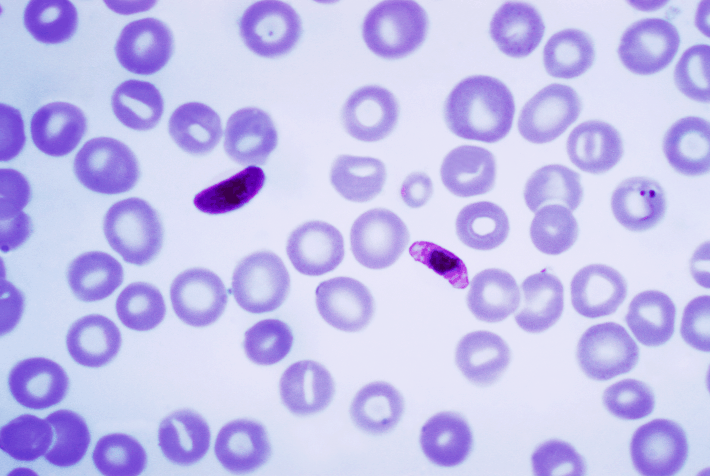February 20, 2015

A roundup of news on drug resistance and other topics in global health.
A new CDDEP visualization shows factors that contributed to the decline in US coronary heart disease mortality between 1980 and 2000. The graphic breaks down which treatments and declining factors were involved in reducing the total deaths from heart disease by over 340,000 in two decades, using data from a 2007 New England Journal of Medicine study. [CDDEP]
Resistance to artemisinin, a leading malaria drug, has spread rapidly across Southeast Asia. A study published in The Lancet Infectious Diseases tracked K13 marker mutations of the Plasmodium falciparum parasite across Myanmar, a measure of resistance that was originally found 1500 miles away in Cambodia. The researchers found resistant mutations in 39% of samples taken and in seven of ten districts studied in Myanmar—including one site that lies within 15 miles of the Indian border. [The Lancet Infectious Diseases]
A strain of carbapenem-resistant enterobacteriaceae (CRE) has infected seven and killed two patients at the UCLA medical center. Hospital officials stated that the resistant bacteria may have come into contact with up to 179 patients and was spread through contaminated endoscopes. [Los Angeles Times]
The latest CDC update estimates 141 US measles cases since January 1. The last two weeks have both seen an increase of around 20 cases, though no new states reported incidence of the disease between Feb 8 and 15. An interactive simulation from the University of Pittsburgh School of Public Health allows the user to model potential measles outbreaks in US cities at different vaccination rates, showing the importance of high vaccination rates for maintaining herd immunity. [CDC, University of Pittsburgh]
A fifteen-minute Ebola diagnostic test has been approved for use by the WHO. Though it has a moderately high margin of error, the diagnostic is easy to use and doesn’t require electricity, making it a particularly valuable tool for use in the field. According to manufacturer Corgenix, the test should be available in one to two weeks after FDA administrative tasks and final costing are complete. A report released this week by CIDRAP highlighted the need for an Ebola vaccine despite decreasing cases in West Africa, citing the disease’s long-term threat to public health. Two potential vaccines began efficacy trials in Liberia on Feb 2 and two more are in phase 1 safety trials. [Reuters, CIDRAP]
Pig manure in Chinese lakes is contributing to antibiotic resistance, according to an article published in Science this week describing in-progress research. Though similar issues exist in other places, the magnitude of the problem in China is staggering: The country has half of the world’s farmed hogs, making for 618 billion kilograms of manure annually, and China uses ten times as many antibiotics as the United States. [Science]
An HIV vaccine may be a few steps closer. A new approach for blocking the virus from attaching to a cell was detailed in a Nature paper this week. The method stimulates production of an antibody-like protein that the study’s author, Michael Farzan, described as “the broadest and most potent entry inhibitor described so far.” The study noted successful protection against infection in lab monkeys, a key first step towards further trials. [Nature, The New York Times]
Health care providers in rural India frequently prescribe incorrect drugs. A study done by researchers at Duke University found that medical providers treating childhood diarrhea and pneumonia in India frequently knew what drug they were supposed to prescribe—such as oral rehydration salts for diarrhea—but rarely carried out the correct prescription. Instead, unnecessary treatments like antibiotic prescriptions were given out, which not only don’t treat the proper illness but contribute to the increasing problem of drug resistance. Urban areas also suffer from improper prescribing: Mumbai has seen an increase in drug-resistant tuberculosis as a result of inappropriate drug prescriptions. [JAMA Pediatrics, PLOS ONE]
Flu activity in the US is decreasing back towards typical levels, according to the most recent CDC influenza report. Activity is still elevated (and has been for 12 weeks straight), but 11 fewer states reported high levels of influenza-like illness this week compared to last week, and several major indicators of flu severity have also decreased. A new positive discovery about the seasonal flu vaccine was described this week: those vaccinated also developed some immunity to the unusually deadly H7N9 strain of avian flu. [CDC, Journal of Clinical Investigation]
Yaws, a neglected tropical disease currently prevalent in thirteen countries, may be on the verge of eradication. A New England Journal of Medicine study analyzed on the proposed World Health Organization yaws eradication campaign, finding that if effectively funded, 12 months of high-coverage mass azithromycin treatment would effectively reduce incidence of disease to meet WHO targets without evidence of emerging resistance. [The New England Journal of Medicine]











